
Music is often reserved as an indoors activity, but children at Space Place Early Years Centre in Prestwick, South Ayrshire enjoy playing instruments, singing and dancing throughout their setting, including in the outdoor area. Staff have designed a special zoned outdoor music area for the children which is based around a ‘music wall’, where children can express themselves through musical creativity.
the music wall
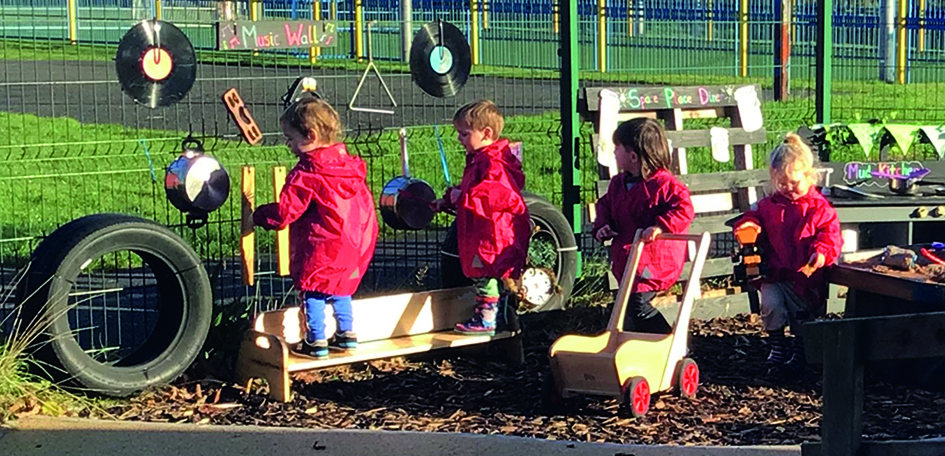 Manager Caroline Fyfe explains how they aim to give children control of their own learning through experiences of touching, moving, listening and observing. It was decided to create a ‘music wall’ outdoors so that children would have the opportunity to explore making sounds together during free play. A benefit of it being sited outdoors is that children have the freedom to make more noise and have the space for big, full-body movement.
Manager Caroline Fyfe explains how they aim to give children control of their own learning through experiences of touching, moving, listening and observing. It was decided to create a ‘music wall’ outdoors so that children would have the opportunity to explore making sounds together during free play. A benefit of it being sited outdoors is that children have the freedom to make more noise and have the space for big, full-body movement.
A metal fence was used for the music wall with a range of loose parts and recycled resources tied to it at differing heights, spread out along a length to encourage a number of children to participate in music play together. The enticing resources include old metal pan lids, tin cans, cymbals, mirrors, disused wooden picture frames, shakers made from recycled bottles, bun tins, disused vinyl records and even an old guitar. The resources can be easily added to or replaced when needed.
Children run sticks along the metal fence, tap tin cans, bang the wooden picture frames, experiment with the sounds the different shakers make and strum or pluck the guitar strings.
The music wall acts as a provocation for children and often leads to them making music together. ‘It gives them a different opportunity to explore sound and what they can do to create different sounds,’ says Caroline. ‘It can be children individually exploring the music wall themselves, but often you can find children grouped together and sometimes it’s almost like a band has been created and they like to sing songs as well, especially from films. I know music tends to be loud – and being outdoors it lends itself to tha– but sometimes children do go to the music area to be quiet.’
The centre has been fortunate to benefit from training around block play, and the local authority has supportedit to invest in block play resources. The outdoor music area is cited near to a block play area, and children incorporate this into their play. ‘The children have been so creative,’ says Caroline. ‘Such as building a stage and discussing how wide it will be and the length of it, how many people can get on the stage and what its purpose is going to be, because it changes from one day to another. It is very exciting watching the children explore all of that and they love to put on a show.’
Children like to dance and sing on their ‘stage’ and will use all sorts of objects to represent microphones. They are also engaged in the costume side of performance and enjoy dressing up. ‘They enjoy walking around in high-heeled shoes because of the clacking sound and the beat that they make, which they love,’ adds Caroline.
As well as making their own music, children like listening to traditional songs on a CD player. Recently, they had lots of fun in the garden exploring and responding to Scottish cèilidh music. ‘The children naturally found a partner and skipped around to the beat,’ says Caroline. ‘We then enjoyed switching partners as we danced to Bee Baw Babbitty.’
their ethos
Space Place is a local authority early learning centre based around the educational philosophy of Reggio Emilia, which focuses on experiential learning through exploration, discovery and play, with the environment regarded as the ‘third teacher’.
At the core is the concept of ‘the hundred languages of children’, where children must have endless ways to express their ideas, with music being an important one of these.
‘Music is a great way of encouraging self-expression and communication with others as they create sounds or sing together,’ says Caroline. ‘Reggio manifests itself from being all about children’s interests, watching their interactions through quality observations, both indoors and outdoors, which is how our environment is created.
‘Because of our Reggio Emilia pedagogy and practice, our children are very much engaged with music and dance, so we wanted to introduce this outside as well because we regard this area as another play room. We believe that the quality of resources should match the indoors in terms of what the children are exposed to in their learning.
‘The music wall was inspired by the children who made their suggestions and a member of staff who is very creative and talented.’
what they gained
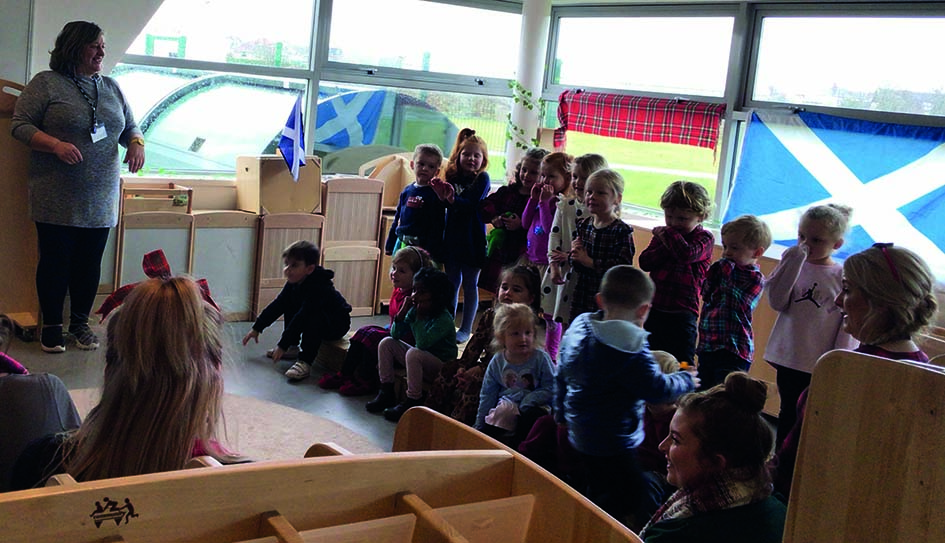 Research has found that taking part in musical activities can enhance children’s brain function. It supports the development of speech and language skills because it stimulates the area of the brain that is linked to language, rhythm and sound recognition.
Research has found that taking part in musical activities can enhance children’s brain function. It supports the development of speech and language skills because it stimulates the area of the brain that is linked to language, rhythm and sound recognition.
Music is regarded as a universal language and, along with demonstrating their creativity, children can express their feelings and emotions through making rhythms and beats. It can be a way of releasing pent-up emotions, or the regularity of a rhythm can be comforting.
‘The benefits that come from music are so rich,’ says Caroline. ‘We find the outdoor music area promotes children’s imagination and curiosity and really brings on children’s gross and fine motor skills and co-ordination as they move, manipulate and use the resources. There is no right or wrong way of using the wall and it is very inclusive for those children who have a barrier to learning.’
The music wall also encourages peer interaction, with all ages of children exploring together and learning from each other. ‘Children listen to what each other are doing, such as making up new beats and songs, which they return to later,’ says Caroline. The collaboration helps children to develop skills in turn-taking, listening, problem-solving and negotiation.
community links
Children benefit from forming musical links in their local community:
They were temporarily based at the community centre, where they joined up with a local ukulele group for singing sessions.
Space Place has formed strong links with a local nursing home, where the children visit. They have found that singing songs and playing music together is a good way of developing inter-generational relationships. For Burns Night, the children visited the residents to dance to Scottish music and eat vegetarian haggis, neeps and tatties together.
A family has recently donated a piano to the centre, which has provided the children with additional musical opportunities, including experimenting with different ways to play the instrument – are hands, fingers or elbows best?
book corner
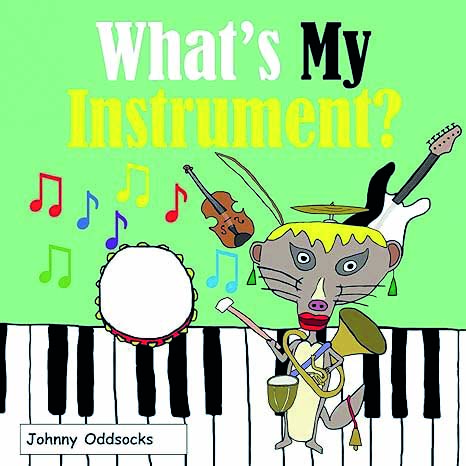 What’s My Instrument? by Johnny Oddsocks
What’s My Instrument? by Johnny Oddsocks
Marilyn the Mongoose is keen to start a band, but she can’t play an instrument so she decides to try out lots of different ones…
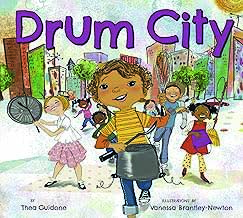 Drum City by Thea Guidone and Vanessa Brantley-Newton
Drum City by Thea Guidone and Vanessa Brantley-Newton
What begins with one boy’s beat on a kettle soon spreads to pots and pans across the neighbourhood.
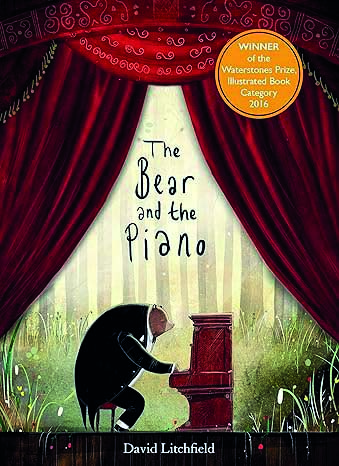 The Bear and the Piano by David Litchfield
The Bear and the Piano by David Litchfield
A young bear becomes a star. But he misses the friends left behind.
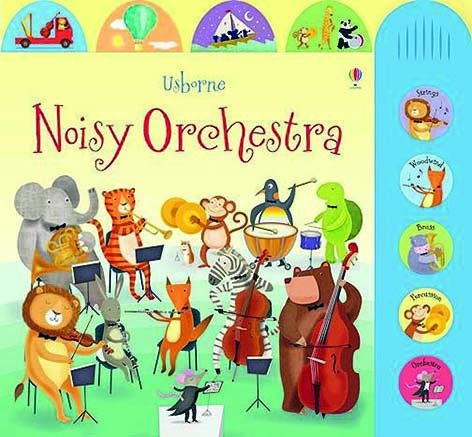 Noisy Orchestra by Sam Taplin, Gareth Lucas and Katherine Lucas
Noisy Orchestra by Sam Taplin, Gareth Lucas and Katherine Lucas
Listen to the animal orchestra getting readyfor a concert, with sound buttons.
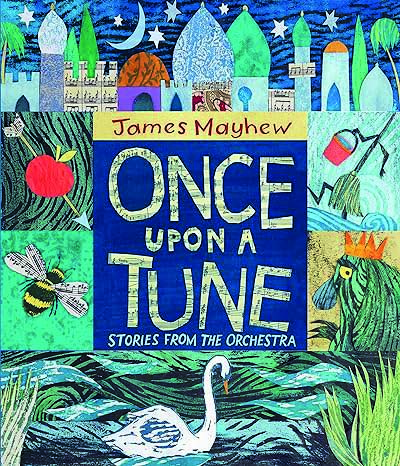 Once Upon a Tune by James Mayhew
Once Upon a Tune by James Mayhew
Six wonderful stories which all inspired great music, such as ‘The Sorcerer’s Apprentice’.
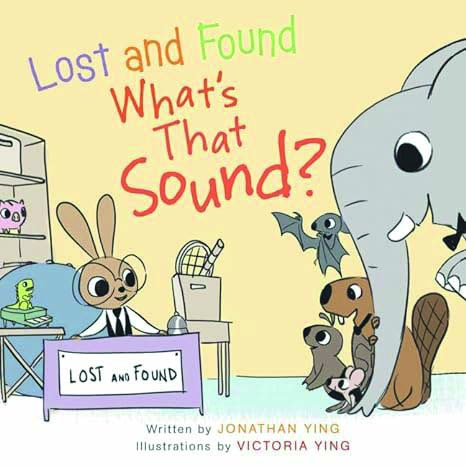 Lost and Found, What’s That Sound by Jonathan and Victoria Ying
Lost and Found, What’s That Sound by Jonathan and Victoria Ying
Will Rabbit find their lost instruments before show time? With lively rhyming text and colourful illustrations.
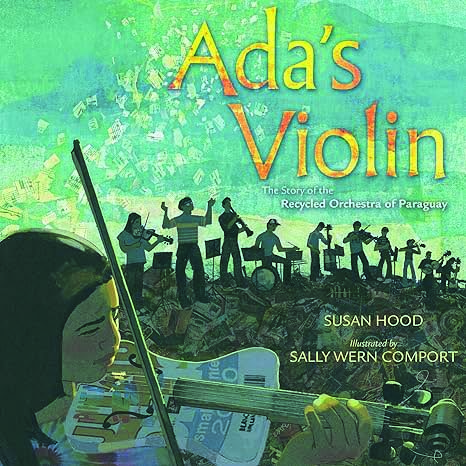 Ada’s Violin by Susan Hood and Sally Wern Comport
Ada’s Violin by Susan Hood and Sally Wern Comport
Ada dreamed of playing the violin, but with little money for anything but the bare essentials, it was never an option – until a music teacher arrived and built an orchestra from recycled materials.
